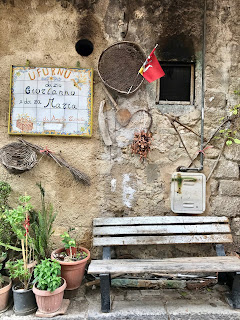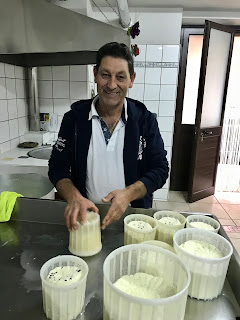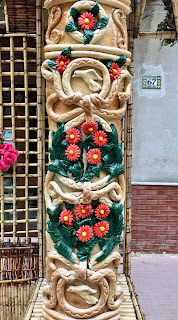Daily Life Of A Typical Sicilian
Sicily, like many of the southern most parts of Italy, is comparatively much less affluent than the areas north of Rome. It is an agricultural community, heavily reliant on nine months of tourism a year, to bring in additional income to the region. It's no surprise that many Italian immigrants you find in richer countries are Sicilian or Napolitans, searching for a better standard of living.
I spent the day in Sant'Angelo Muxaro doing what is called relationship tourism. I interacted with the locals, observed their day to day activities and entered many homes to sample olive oil that I was interested in purchasing (families produce their own olive oil in small quantities). The town is small, a couple of thousand people, just outside Agrigento.
Sant'Angelo Muxaro town center
The cheese maker making pecorino, ricotta and tuma.
Many of the locals produce enough goods to supply the town and perhaps some of the surrounding areas and are very specialised. Generational occupations have been the norm but the young, like in most provincial towns, gravitate towards the big cities or go abroad in search of better opportunities. There aren't enough jobs in these small villages, and many feel the lack of governmental support.


Maria, the baker, hasn't had a holiday in 38 years. She starts at 3 am makes her breads, pizzas, sausage rolls, etc in her traditional wood fired oven. The local workers come and take away the various newly baked goods with them for lunch, the village buys their daily bread supplies and the children pick up lunch en route to school. Without her, there would be no freshly baked goods in the village. It's still all very traditional.
The area is full of archaeological findings, dating back as far as 1200 BC but unfortunately, more funding is required to develop these sites. Some of their findings have made their way to many museums, including the British Museum.
Still, as most Italians, they seem quite relaxed, chirpy and generous, even if the struggles of daily living are clearly etched in their faces.
I came across a very interesting festivity in the next village. They created pillars of bread to commemorate a saint day. They assembled their pictures using lentils and other pulses, seeds and chilies as you can see below. They love their local festivities (mostly religious) and I'm sure they spend months preparing for them.
Finally, I had to sample the pecorino gelato. It wasn't exactly my cup of tea, but the pistachio, so popular in this region they make pesto out of it, was delicious.











Comments
Post a Comment